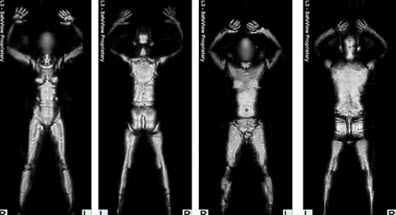In Imogen Tyler’s book Revolting Subjects there is a chapter entitled Naked Protest and the Feminist Commons. It begins with detailing a protest at Yarls Wood Immigration prison after a mother and her baby were going to be deported:
“…a pregnant woman was forcibly restrained, separated from her six-year old son and placed I solitary confinement. The following day the Yarls Wood mothers staged a second protest in a corridor outside a staff office demanding to know what had happened to the women who had been removed. During this gathering several of the mothers proceeded to remove their clothes, some baring their breasts and others stripping to expose their genitals.”
What struck me about this naked protest – and especially its physical context within the prison estate was firstly the vulnerability that as they initially stripped off they must have initially felt, but also a sense that they were actually only repeating what they were forced to do at various points by immigration and other authorities- strip naked- but this time they were asserting control.
Indeed, Mercy Guobadia one of the protesters said:
“I took my clothes off because they treat us like animals.”
Being strip searched is both a everyday and extraordinary part of being incarcerated. Whether that is in a detention centre, prison, police station or port of entry being forced to strip in front of hostile strangers is a humiliating and degrading experience.
It is no accident that one of the first things you will be forced to do on entering prison is to strip naked. This is part of the “Reception” process. Your powerlessness is underscored from the outset; the power relation between you and the prison guards is made crystal clear, as you shiver masking your gentials with your hands as they make sarcastic comments about your body. Its institutional-ritualised abuse with a mission to oppress and dehumanise that is repeated thousands of times across the detention estate(s) and police stations.
In the opening scene of In Darkness (2011) a group of naked Jewish women are being chased through the woods by some Nazi Soldiers. The fact that they have no clothes on, adds to the sense that they are not considered human by their pursuers. Slaves were often sold naked in public, emphasising their status as property not people.
The strip-search can be perhaps be rendered as metaphor for the invasiveness of the state in general, the era of near total surveillance we are entering- the x-raying of all our lives. This should not be allowed to take us away from the fact that strip search is a legimitised tool of violence by the state against the individual, against our very sense of self. It should be seen in the context of other tools of alienation from the self; the prison uniform, the denial of choice in everyday matters such as when you sleep, eat or wash or what you wear. The claims of the rehabilitative effect of prison, must be set against the overall destructive nature of the prison experience, especially to those who endure it at a young age.
Recent figures show that the Metropolitan Police have stripped-searched 4,500 10-16 year olds in the last 5 years. My own research has found that the local police force to me – Avon & Somerset Police – have stripped-searched some 877 11-19 year olds over the same period (and 5207 of all ages). The difference between the population sizes of the areas covered by The Metropolitan Police and Avon & Somerset means that the rate per head are similar for young people.
Being strip searched while young makes its impact greater, as you are likely to be more vulnerable at this age. However this process is going to be a ordeal for anyone:
(e) If necessary to assist the search, the detainee may be required to
hold their arms in the air or to stand with their legs apart and bend
forward so a visual examination may be made of the genital and anal areas
provided no physical contact is made with any body orifice;
It is no surprise to find that young black men are disproportionately effected by this practice. Almost 30% of males strip searched between the ages of 12-19 self identified as BME origin. This compares with a general BME population over the Avon and Somerset area of 6.5%
This reminds us of the more publicised targeting of Black people with Stop and Search powers, as well as back to those women in Yarls Wood whose skin colour is masked by their immigration (non) status.
Data Source: https://www.whatdotheyknow.com/request/strip_searches#incoming-446713

